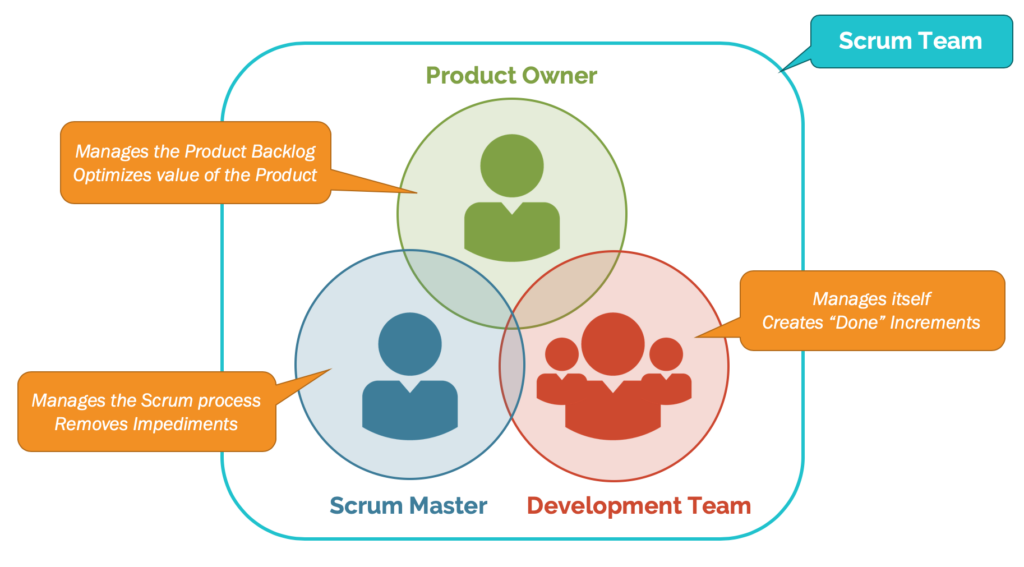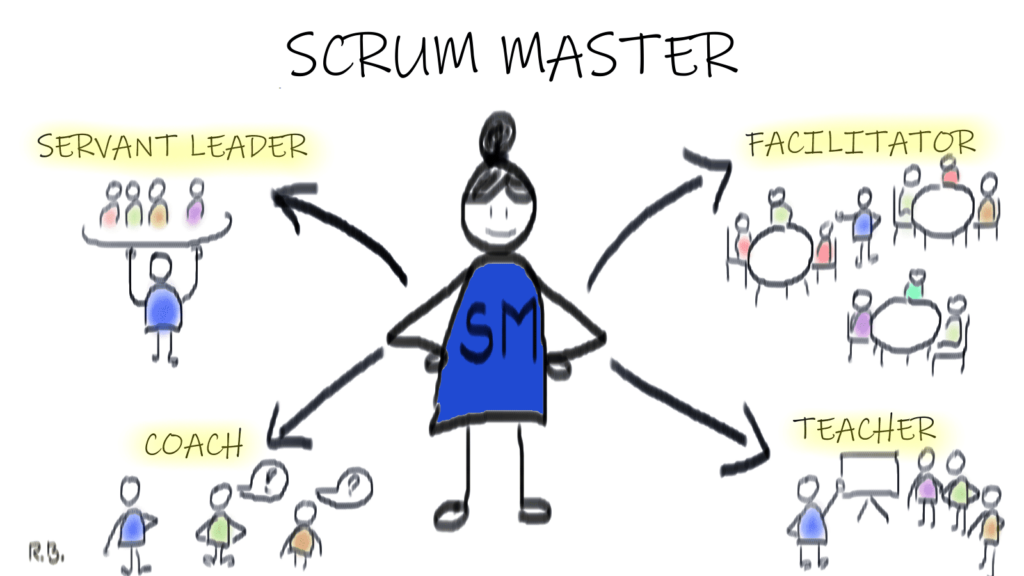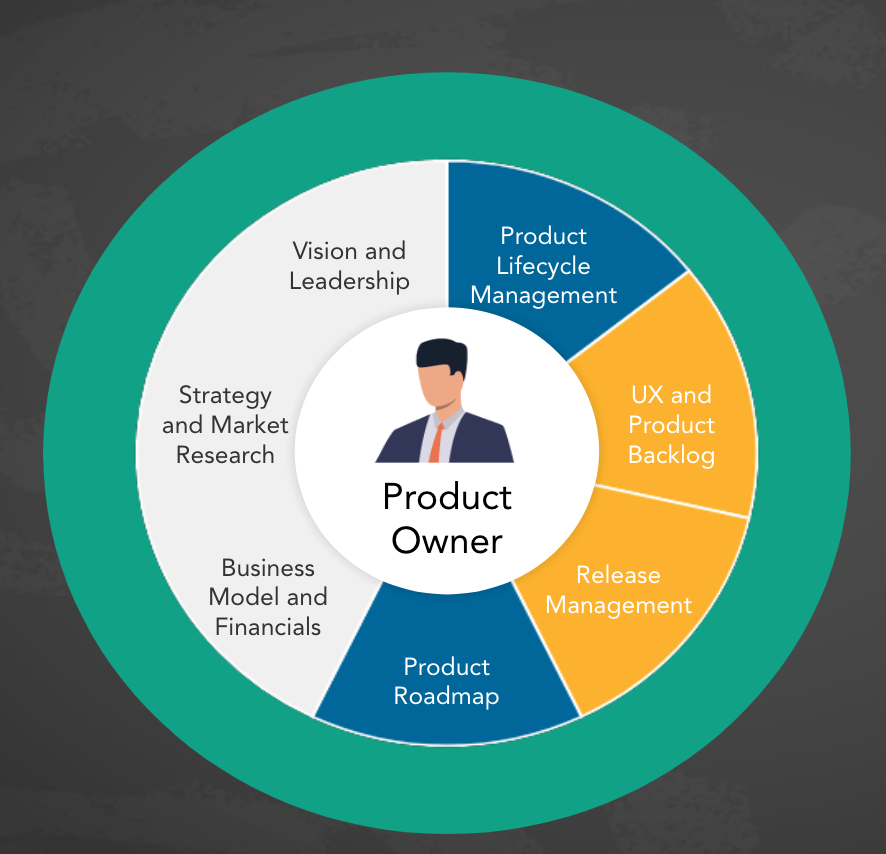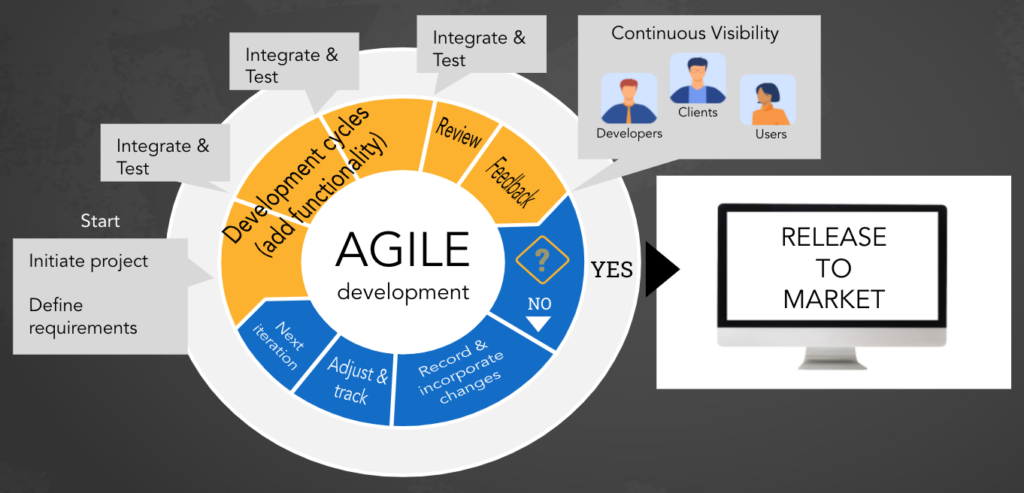Want to learn the difference between Scrum roles and job titles?
Then you’ve come to the right place.
Regardless of your industry, any company that transitions to Scrum faces a key dilemma: how do you match job titles with Scrum roles?
While companies all across the world share similar job titles, each one comes with its own nuances that reflect the specific responsibilities, duties, and demands of each company.
On the other hand, Scrum roles are predetermined, fixed positions that have their own specific tasks that are. They are not dependent on your organizational job titles.
Companies try to map titles to Scrum roles. However, a better approach is to help team members work into their Scrum roles.
In this article, we examine the three Scrum roles, their responsibilities within an organization, and how to distinguish them from job titles.
What are the Three Scrum Roles?
According to the Scrum Guide, there are three Scrum roles.
- The Scrum Master
- Product Owner
- The Developer/Development Team

Credits: Scrum.org
Each of these three roles has certain core responsibilities, regardless of the organization or industry.
Let’s take a closer look at each one.
The Scrum Master
A Scrum Master is a professional on an Agile team whose purpose is to ensure that the team adheres to the principles, values, and recommendations laid out in Scrum. It’s common to view the role as managing Scrum processes, removing blockages, and organizing meetings.

Credits: LetsScrumIt
However, a Scrum Master is a facilitative team leader who makes sure that the team maintains and adheres to the chosen process while helping remove any blockages.
The Scrum Master has to ensure that the Scrum team maintains all the Scrum values, rules, and practices. That means they need to have a complete understanding of Scrum themselves.
They also teach things like cross-functionality and self-organization to help team members improve productivity and quality.
The following is a list of the core responsibilities of a Scrum Master:
- Coaching the Agile team
- Ensuring that the team sticks to the principles of Scrum
- Bridging the gap between organizational goals and Scrum requirements
- Facilitating a team’s ability to meet its goals through servant leadership
- Identifying and removing blockages
- Taking the role of the agent of change
There are a series of qualities and characteristics that Scrum Masters must have under their belt in order to carry out their responsibilities. First of all, they need to be knowledgeable about the Scrum framework and agile principles.
Furthermore, they must have a high level of empathy in order to understand the challenges that individual team members face as well as any possible solution that helps team members overcome these difficulties.
A Scrum Master must also sharpen their communication and collaborative skills. This is important since this role demands that you liaise with various team members to resolve conflict, clarify doubts, and provide guidance where needed.
The Product Owner
A product owner defines and sets a clear direction for the product. They are responsible for delivering the most value in any product. For that, they need an understanding of the customer and a vision for the value that the Scrum team needs to deliver.

In doing so, the product owner also has to balance the needs of other stakeholders in the company.
The following are the core responsibilities of the product owner:
- Managing the Scrum backlog and its various items
- Providing stakeholder management to make sure other team members, organizational leadership, users, and customers are on the same page
- Overseeing team sprints and ensuring each one’s success
- Maintaining the product vision
- Ensuring the product quality
- Guaranteeing the product’s adherence to its budget and managing possible trade-offs
- Defining and verifying the acceptance criteria
On top of that, product owners must have extensive domain knowledge. They must be excellent communicators, motivators, and negotiators.
Product owners also need to maintain and manage relationships. That’s because there’s a good chance they have to make unpopular decisions.
The Development Team
The development team consists of any and everyone who participates in the technical aspects of product building.
For that reason, the development team includes software engineers and product designers.
Each team member’s role is unique in the product design and development processes.

The development team must know how to operate with minimal supervision and make the right technical decisions to adhere to product deadlines. That means they must know how to make relevant decisions, fix problems, and enact continuous improvement measures.
The development team’s core responsibilities include:
- Delivering the work in the product backlog through the sprint
- Maintaining complete transparency during sprints in the daily Scrum
- Working with the Scrum Master to facilitate tasks
Members of the development team seek help from the Scrum Master through daily Scrum standups. There, members get to highlight key issues they face and liaise with the rest of the team to find solutions to their problems.
In such cases, the Scrum Master acts as a facilitator while the development and larger Agile team run the daily Scrum.
Scrum Roles Vs Job Titles
A typical Scrum team comprises a Scrum master, product owners, and members of the development team. However, it’s important to distinguish between the role each of these professionals performs within the context of Scrum and the responsibilities that each one carries as part of their job title.
Scrum roles are often additional roles that existing employees have to take on. It doesn’t matter what their job title is. For example, in some companies, it is common to come across professionals who occupy the roles of Scrum Master and product manager at the same time.
A business analyst has the chance to become a Scrum Master if they have the required profile, knowledge, and experience to assume that role.
In doing so, they adopt an additional role that doesn’t interfere with their original job title.
Your career progression and career path have little to no effect on your ability to play a Scrum role.
Mapping Scrum Roles on Job Titles
Most organizations make the mistake of assigning Scrum roles to employees at random. The right way is to find people with the right skills and characteristics who match each role’s needs.
If you have a product manager or project manager, it doesn’t mean they must be next in line to become the Scrum Master. Some businesses find that it is better to award the role of Scrum Master to another team member as opposed to the product manager. That way, the latter gets to focus more on the responsibilities outlined in their job description.
The same goes for product owners. While they are apt professionals for the job, not all product owners have the availability needed to take on an additional role as a Scrum Master.
For that matter, even a developer or designer has a shot at becoming a Scrum Master if they check all the boxes.
Scrum Roles vs Job Titles: Key Takeaways
It takes a lot of time to look for people with the right characteristics for each Scrum role.
However, it’s better to find a person who already understands the responsibilities and nuisances of the role.
That’s why it’s not right to give Scrum roles based on job titles. Instead, start by analyzing their understanding of the Scrum process, characteristics, and availability.
This helps you understand who is the right fit to play the role of the Scrum Master.